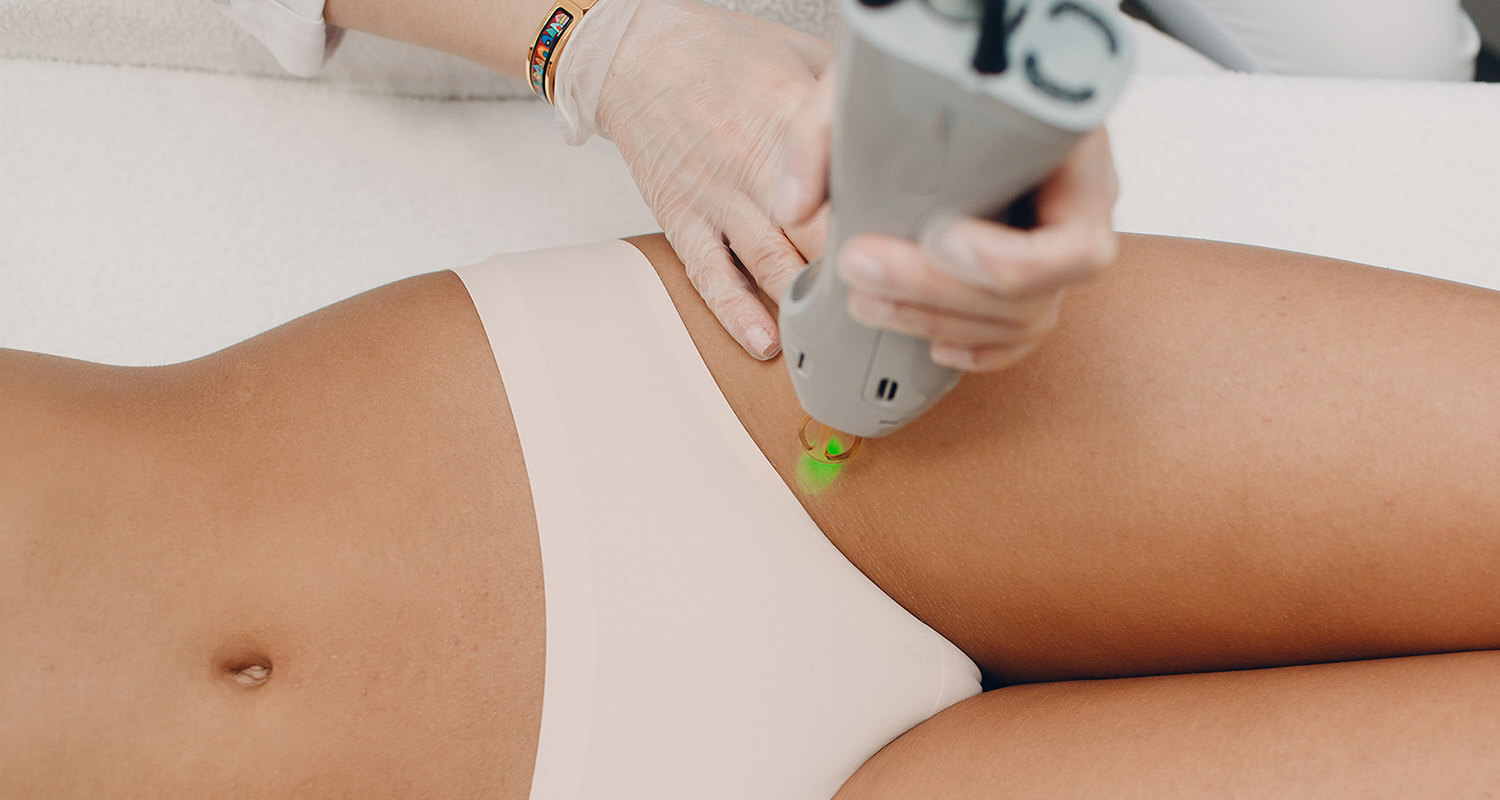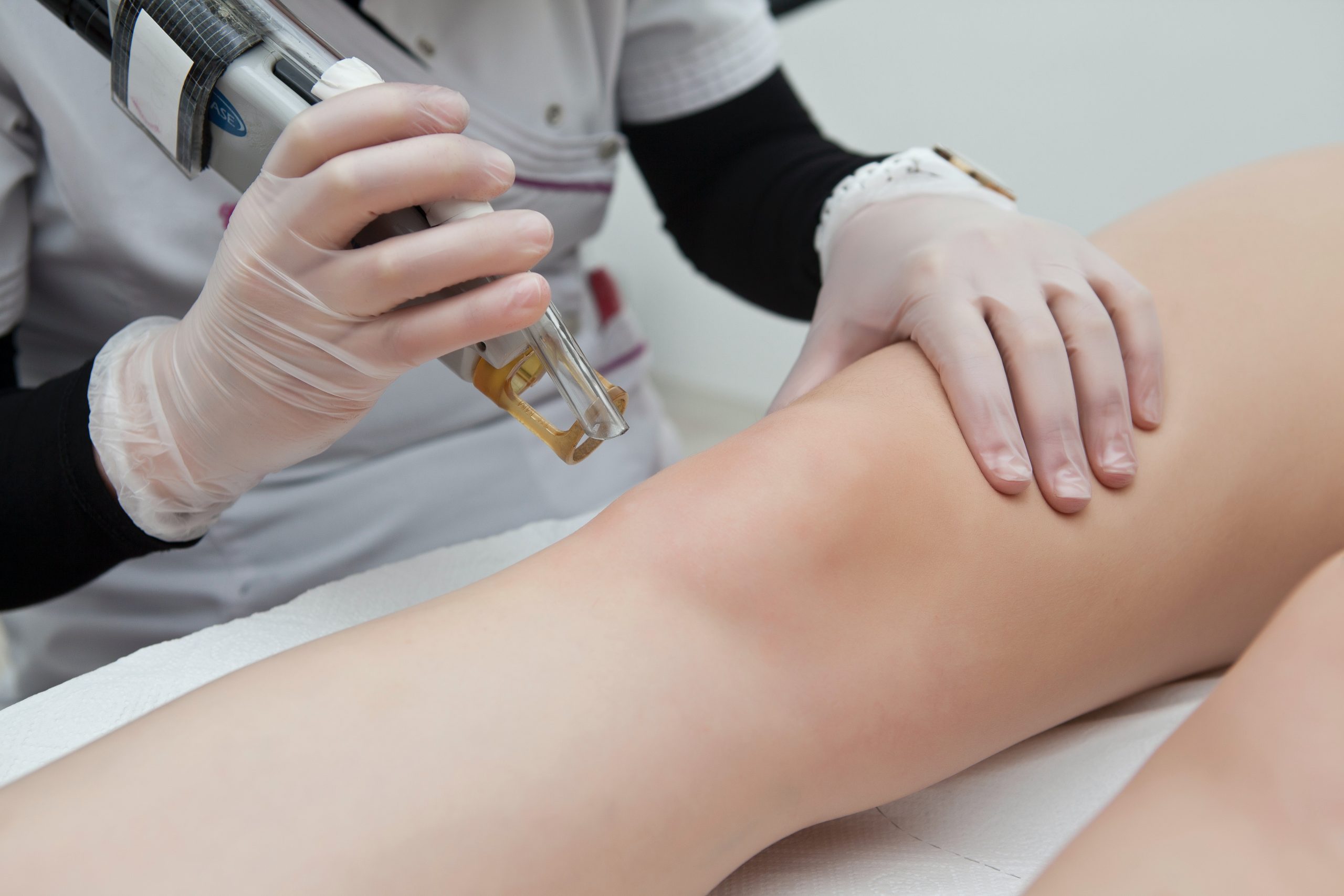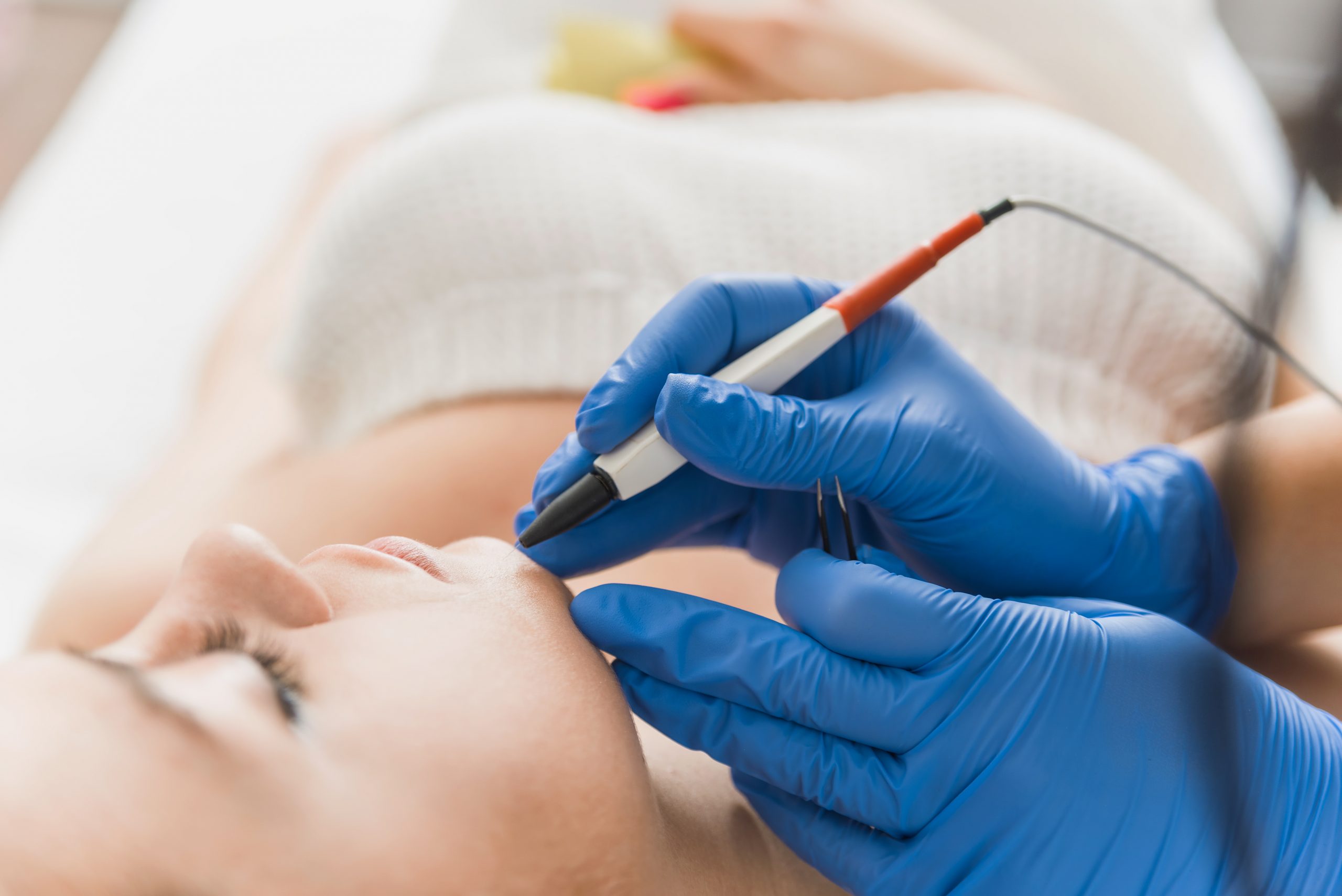Home>FAQs>How Effective Is Electrolysis Hair Removal For Your Bikini Line


FAQs
How Effective Is Electrolysis Hair Removal For Your Bikini Line
Modified: September 23, 2023
Find answers to general questions about electrolysis for the bikini line, including how many sessions are usually required for effective hair removal.
(Many of the links in this article redirect to a specific reviewed product. Your purchase of these products through affiliate links helps to generate commission for Under-tec.com, at no extra cost. Learn more)
Table of Contents
- Introduction
- What is electrolysis?
- How does electrolysis work on the bikini line?
- Factors that affect the number of sessions needed
- The average number of sessions required for electrolysis on the bikini line
- Preparing for an electrolysis session on the bikini line
- What to expect during an electrolysis session on the bikini line
- Aftercare for electrolysis on the bikini line
- Conclusion
Introduction
Welcome to the world of electrolysis for the bikini line! If you’re tired of dealing with unwanted hair in this sensitive area, electrolysis might be the solution you’ve been searching for. Electrolysis is a tried-and-true method of permanent hair removal that has been around for decades. It targets the hair follicles directly, making it one of the most effective long-term hair removal options available.
In this article, we will explore the ins and outs of electrolysis for the bikini line, including how it works, factors that affect the number of sessions needed, and what to expect before, during, and after each session. By the end, you’ll have a clear understanding of the process, helping you decide if electrolysis is the right choice for you.
But first, let’s start with the basics. Electrolysis is a technique used to permanently remove hair by destroying the hair follicles. Unlike temporary hair removal methods like shaving or waxing, which only remove the hair above the skin’s surface, electrolysis targets the root of the hair, preventing it from regrowing. It is a safe and effective method that has been approved by the Food and Drug Administration (FDA).
Now that you have a general understanding of electrolysis, let’s delve deeper into how it specifically works on the bikini line. We’ll explore the various factors that can impact the number of sessions needed and discuss the average number of sessions required. Additionally, we’ll provide tips on how to prepare for an electrolysis session on the bikini line, what to expect during the procedure, and how to take care of your skin afterward to ensure optimal results.
So, whether you’re considering electrolysis for the first time or curious to know more about this hair removal method, let’s get started on your journey to a smooth and hair-free bikini line!
What is electrolysis?
Electrolysis is a hair removal technique that has been around for over a century. It is considered a permanent hair removal method because it targets the hair follicles and destroys them, preventing hair from regrowing. This sets electrolysis apart from temporary hair removal methods like shaving, waxing, or using hair removal creams.
The process of electrolysis involves the use of a fine needle-like probe that is inserted into each individual hair follicle. A small electrical current is then applied to the probe, which generates heat. This heat destroys the hair follicle’s growth cells, preventing any future hair growth. The procedure is safe and effective when performed by a qualified and experienced electrologist.
There are three main types of electrolysis techniques: galvanic, thermolysis, and blend.
- Galvanic electrolysis: This method uses direct current to create a chemical reaction in the hair follicle. A probe is typically inserted into the follicle, and a low-level electric current is delivered. This electric current produces a chemical change that destroys the hair follicle.
- Thermolysis: Also known as short-wave or high-frequency electrolysis, thermolysis uses alternating current to generate heat in the hair follicle. The heat produced destroys the follicle and prevents future hair growth. Thermolysis is the most commonly used method in modern electrolysis practices due to its faster treatment times and versatility.
- Blend: Blend electrolysis combines the two methods mentioned above. It uses both direct current and alternating current simultaneously to target the hair follicles. This method is often preferred for stubborn or deeply rooted hair follicles.
Electrolysis is suitable for all skin and hair types. It can be used effectively on various parts of the body, including the bikini line. The results of electrolysis are considered permanent, with full clearance achieved after multiple sessions. However, it is important to note that electrolysis requires a series of treatments to completely remove all unwanted hair.
Now that you have a better understanding of what electrolysis is, let’s explore how it specifically works on the bikini line and the factors that can affect the number of sessions needed for optimal results.
How does electrolysis work on the bikini line?
Electrolysis works on the bikini line in a similar way to other areas of the body. The process involves targeting individual hair follicles with a small, thin probe that delivers an electrical current. This current is carefully calibrated to destroy the hair follicle without causing damage to the surrounding skin. Over time, repeated treatments will lead to permanent hair removal.
When it comes to electrolysis on the bikini line, there are a few considerations to keep in mind. Firstly, the bikini area typically has thicker and coarser hair compared to other parts of the body. This means that more sessions may be needed to fully remove the hair. Additionally, the sensitivity of the skin in this area may require adjustments to the electrical current intensity to ensure comfort during the procedure.
The electrologist will start the process by cleaning the area and applying a topical numbing cream if desired. They will then insert the probe into each hair follicle, delivering a small electric current to destroy the root. The sensation during the treatment can vary from person to person, with some describing it as a mild tingling or pricking sensation.
The length of each electrolysis session can vary based on the individual and the amount of hair to be treated. On average, a session can last anywhere from 15 minutes to an hour. The number of sessions required for complete hair removal also varies depending on factors like hair density, hair type, and individual response to the treatment.
It is important to note that electrolysis works best on hair that is in the active growth phase, known as the anagen phase. Since not all hair is in this phase at the same time, multiple sessions are necessary to catch all the hair in the anagen phase and ensure its complete removal.
Throughout the treatment process, it is crucial to maintain open communication with your electrologist. They will guide you on the number of sessions needed and any aftercare instructions to ensure the best possible results.
Now that we understand how electrolysis works on the bikini line, let’s delve into the factors that can influence the number of sessions required for optimal results.
Factors that affect the number of sessions needed
Several factors can influence the number of electrolysis sessions required for complete hair removal on the bikini line. While the exact number of sessions varies from person to person, understanding these factors can give you an idea of what to expect and help manage your expectations throughout the treatment process.
1. Hair growth cycle: Hair follicles go through different phases of growth, including anagen (active growth), catagen (transition), and telogen (resting). Electrolysis is most effective during the anagen phase, as this is when the hair follicle is actively producing cells that can be targeted and destroyed. Since not all hair is in the anagen phase simultaneously, multiple sessions are needed to treat all the hair as it cycles through different phases.
2. Hair density and thickness: The density and thickness of hair in the bikini line area can impact the number of sessions needed. Thicker and denser hair may require more treatments, as the electrologist needs to target each hair follicle individually. Additionally, hairs that are deeply rooted may need extra sessions to ensure complete removal.
3. Hormonal factors: Hormonal imbalances or changes in hormone levels can affect hair growth patterns. Hormones like testosterone can stimulate hair growth, making it more challenging to achieve permanent hair removal. In some cases, addressing underlying hormonal issues may be necessary to achieve the desired results.
4. Previous hair removal methods: Hair removal methods that only target the surface of the skin, such as shaving or waxing, can affect the effectiveness of electrolysis. These methods can stimulate hair growth or cause ingrown hairs, which may require additional sessions of electrolysis to treat effectively.
5. Consistency of treatments: Regular and consistent sessions are essential for successful electrolysis. Skipping or spacing out sessions too far apart can prolong the treatment process, as it requires targeting all the hair follicles during their active growth phase.
6. Individual response to treatment: Each person’s body and hair follicles respond differently to electrolysis. Factors like skin type, hair color, and sensitivity may affect how the treatment works on the bikini line. Some individuals may experience faster results, while others may require additional sessions for complete hair removal.
It is crucial to consult with a qualified electrologist who can assess your individual situation and provide an estimate of the number of sessions required. They will consider these factors and design a treatment plan specific to your needs.
Now that we’ve explored the factors that can influence the number of sessions needed, let’s move on to understanding the average number of sessions required for electrolysis on the bikini line.
The average number of sessions required for electrolysis on the bikini line
The number of sessions needed for complete hair removal on the bikini line can vary depending on several factors, including hair type, density, and individual response to treatment. While it is difficult to provide an exact number of sessions for every individual, understanding the average range can help set expectations and provide a general guideline.
On average, most individuals require between 8 to 12 sessions to achieve permanent hair removal on the bikini line. However, it is important to note that this number can vary significantly depending on factors such as hair growth cycle, hair density, and individual response to treatment.
The bikini line area tends to have thicker and coarser hair compared to other parts of the body. This means that more sessions may be needed to fully remove the hair. Additionally, since electrolysis targets hair in the anagen phase of growth, multiple sessions are necessary to catch all the hair follicles during their active growth period.
During your initial consultation, a qualified electrologist will assess your hair type and density, discuss your treatment goals, and create a personalized treatment plan. They may recommend an initial series of sessions spaced apart to target the hair in different growth stages. As the treatment progresses, the frequency of sessions may be adjusted based on your individual response.
Consistency in attending the recommended sessions is essential for optimal results. Skipping or spacing out treatments too far apart can prolong the treatment process and may require additional sessions to catch up with the hair growth cycle.
It is important to remember that electrolysis is a permanent hair removal method, and the goal is to achieve full clearance over time. While visible improvements can be seen after each session, complete hair removal on the bikini line will require multiple sessions to address all the hair follicles.
Your electrologist will closely monitor your progress throughout the sessions and provide guidance on the number of sessions needed for your specific case. They will consider factors such as your hair growth pattern, hair type, and density to determine the optimal treatment duration.
Now that we have discussed the average number of sessions required for electrolysis on the bikini line, let’s move on to the preparations needed before an electrolysis session on the bikini line.
Preparing for an electrolysis session on the bikini line
Preparing for an electrolysis session on the bikini line involves a few simple steps to ensure a comfortable and effective treatment. By following these guidelines, you can maximize the results and reduce any potential discomfort during the session.
1. Consultation: Before your first electrolysis session, schedule a consultation with a qualified electrologist. During this consultation, they will assess your specific needs and discuss your treatment goals. They will also provide information on what to expect during the sessions and any pre-session preparations specific to your case.
2. Avoid sun exposure: Prior to your electrolysis session, it is recommended to avoid excessive sun exposure on the bikini line area. Sunburn or tan can make the skin more sensitive and prone to discomfort during the treatment. If you have a tan or sunburn, it is advisable to wait until your skin has fully healed before scheduling an electrolysis session.
3. Avoid hair removal methods that remove the hair from the root: Leading up to your electrolysis session, do not use hair removal methods that remove the hair from the root, such as waxing, plucking, or using depilatory creams. These methods disrupt the hair growth cycle and may make the treatment less effective. Shaving or trimming the hair is acceptable, as it only removes the hair above the surface and does not interfere with the hair follicle.
4. Maintain proper hygiene: On the day of your electrolysis session, ensure that you have cleaned the bikini line area thoroughly. This will help create a clean and hygienic environment for the treatment. Avoid applying any lotions, creams, or oils to the area, as they can interfere with the effectiveness of the treatment.
5. Communicate any medication or skin conditions: If you are taking any medications or have any skin conditions, it is important to inform your electrologist before the session. Some medications or skin conditions may affect the treatment or require adjustments to the procedure to ensure your safety and comfort.
6. Wear comfortable clothing: On the day of your session, wear loose and comfortable clothing that allows easy access to the bikini line area. This will ensure that you can relax during the procedure and minimize any potential discomfort.
By following these simple guidelines, you can prepare yourself for a successful electrolysis session on the bikini line. Remember to consult with your electrologist for any specific instructions or recommendations tailored to your individual needs.
Now that you are prepared for your electrolysis session, let’s explore what to expect during the actual procedure.
What to expect during an electrolysis session on the bikini line
During an electrolysis session on the bikini line, you can expect a professional and comfortable experience from your electrologist. While the specific details may vary depending on the clinic and individual, here is a general overview of what you can expect during the procedure.
1. Consultation and assessment: Before the treatment begins, your electrologist will likely conduct a brief consultation to discuss your treatment goals and address any concerns or questions you may have. They will also assess the area and determine the most suitable approach for your specific needs.
2. Preparation of the bikini line: The electrologist will clean the bikini line area using an antiseptic solution to ensure a sanitized environment for the treatment. They may also apply a topical numbing cream if desired or necessary to minimize any discomfort during the procedure.
3. Insertion of the probe: The electrologist will gently insert a fine needle-like probe into each individual hair follicle in the bikini line area. The probe is designed to deliver a small electrical current directly to the root of the hair follicle.
4. Activation of the electrical current: Once the probe is inserted, the electrologist will activate the electrical current at a level that is most appropriate for your comfort and tolerance. The current flowing through the probe will effectively damage the hair follicle, preventing further hair growth.
5. Sensations during the treatment: As the electrical current is applied, you may experience various sensations, such as a tingling, pricking, or mild stinging feeling. The level of discomfort can vary from person to person, but many find the sensation tolerable. If you find the treatment uncomfortable, inform your electrologist, and they can make adjustments to ensure your comfort.
6. Treatment duration: The duration of each electrolysis session on the bikini line can vary depending on the size of the treatment area and the density of the hair. Sessions can range anywhere from 15 minutes to an hour or longer. Your electrologist will guide you on the estimated time needed for your specific treatment plan.
7. Post-treatment care and advice: After the electrolysis session, your electrologist will provide you with post-treatment care instructions. This may include recommendations for soothing the treated area, such as applying a cool compress or using a gentle moisturizer. They may also advise you to avoid certain activities or products that could irritate the skin or interfere with the healing process.
It is normal for the treated area to have slight redness or swelling immediately after the session, but this typically subsides within a few hours. Some individuals may experience minor scabbing or crusting, which will heal naturally over time. It is important to follow your electrologist’s aftercare instructions to ensure proper healing and to minimize any potential complications.
Remember, open communication with your electrologist is crucial throughout the session. Inform them of any discomfort or concerns you may have, and they will make adjustments to ensure your comfort and satisfaction.
Now that you know what to expect during an electrolysis session on the bikini line, let’s explore the aftercare guidelines for optimal results.
Aftercare for electrolysis on the bikini line
After an electrolysis session on the bikini line, proper aftercare is essential to ensure optimal healing and results. Taking care of the treated area can minimize any potential side effects and promote a speedy recovery. Here are some important aftercare guidelines to follow:
1. Keep the area clean: Gently cleanse the treated area with a mild, fragrance-free cleanser to remove any debris or bacteria. Avoid using harsh soaps or scrubs that may irritate the skin. Pat the area dry with a clean towel instead of rubbing.
2. Avoid touching or picking the area: It’s important to refrain from touching or picking at the treated area, as this can introduce bacteria and increase the risk of infection. Let any scabs or crusts naturally heal and fall off on their own.
3. Avoid sun exposure: Protect the treated area from direct sun exposure for at least 48 to 72 hours after the session. If you need to be in the sun, apply a broad-spectrum sunscreen with a high SPF to prevent sunburn and protect the healing skin.
4. Avoid swimming and hot tubs: Refrain from swimming in pools, hot tubs, or other bodies of water for 24 to 48 hours following the electrolysis session. Chlorine, bacteria, and other irritants can further irritate the treated skin and impede the healing process.
5. Apply soothing creams or ointments: To soothe any redness or discomfort, you can apply a gentle cream or ointment recommended by your electrologist. Look for products that are specifically formulated for aftercare following hair removal treatments.
6. Avoid strenuous activities: Avoid engaging in activities that may cause excessive sweating or friction on the treated area, as this can irritate the skin. It’s best to avoid intense workouts, wearing tight clothing, or activities that may cause friction on the bikini line area.
7. Follow your electrologist’s instructions: Every individual is unique, and your electrologist may provide specific aftercare instructions tailored to your needs. Be sure to follow their guidance regarding cleaning, moisturizing, and any additional precautions to take.
8. Attend follow-up sessions and maintenance treatments: Depending on the individual and the hair growth cycle, multiple electrolysis sessions may be required to achieve permanent hair removal. It’s important to follow your electrologist’s schedule for follow-up sessions and maintenance treatments to ensure all hair follicles are targeted and removed over time.
Remember, everyone’s healing process is different, and it’s important to be patient with results. If you experience any unusual or prolonged side effects, or if you have any concerns, reach out to your electrologist for guidance and support.
By following these aftercare guidelines, you can promote proper healing and achieve the best possible results from your electrolysis sessions on the bikini line.
Now that we have covered the aftercare aspects, let’s conclude with a summary of what we have covered in this article on electrolysis for the bikini line.
Conclusion
Electrolysis is a safe and effective method for achieving permanent hair removal on the bikini line. By targeting the hair follicles directly, electrolysis destroys them, preventing future hair growth. While the number of sessions required varies depending on factors such as hair type, density, and individual response, the average range is typically between 8 to 12 sessions.
During an electrolysis session on the bikini line, you can expect a consultation with your electrologist to determine your specific needs and goals. The treatment itself involves the insertion of a probe into each hair follicle, delivering a small electrical current to destroy the hair root. Sensations during the procedure can range from tingling to mild stinging, but discomfort is generally tolerable.
Post-treatment, it is important to keep the treated area clean, avoid sun exposure, and follow any specific aftercare instructions provided by your electrologist. By adhering to proper aftercare, you can promote healing and minimize the risk of complications.
Remember, electrolysis is a gradual process, and it requires consistency and patience to achieve permanent results. Each session targets different hair follicles in their active growth phase, so multiple sessions are necessary to ensure complete clearance.
If you’re tired of dealing with unwanted hair on your bikini line and desire a long-lasting solution, electrolysis may be the answer. Consult with a qualified electrologist to discuss your individual needs and create a treatment plan that is tailored to you.
Embark on your journey to a smooth and hair-free bikini line with electrolysis, and say goodbye to the hassle of temporary hair removal methods for good.









